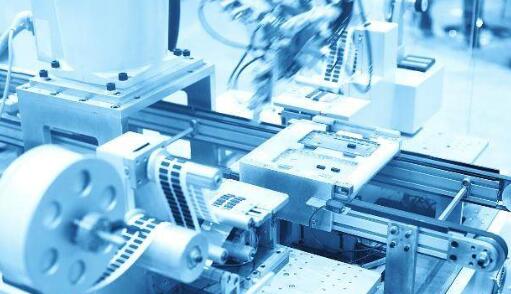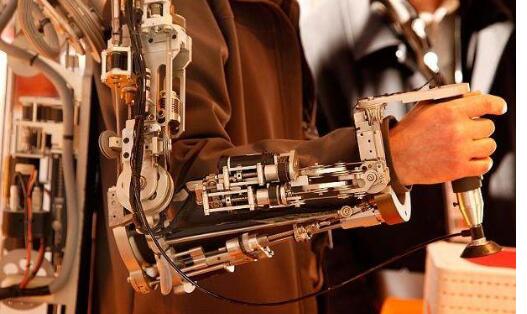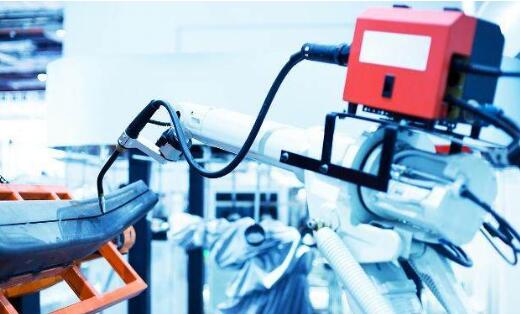The so-called embedded artificial intelligence means that devices do not need to be networked to perform artificial intelligence through large-scale computing in the cloud data center. Instead, they can be calculated locally, and they can do real-time environment awareness, human-computer interaction, and decision-making control without networking. What is the relationship between embedded and artificial intelligence? Do you know the trend of embedded artificial intelligence? This article focuses on embedded and artificial intelligence in detail.
Embedded and Artificial IntelligenceArtificial intelligence may not be embedded. The field of artificial intelligence covers a large number of disciplines and has many applications. The relationship between artificial intelligence and embedded systems can be described by the poems of Su Shi's “Tibetan Wallâ€, that is, “seeing Cheng Chengfeng as a peak, different levels in different directions. You don’t know the true colors of the mountains, but you are in this mountainâ€. For a long time, all kinds of artificial intelligence have been around me, but we have turned a blind eye. It can be said that embedded technology has opened the process of artificial intelligence. The ultimate goal of artificial intelligence is to realize the replacement of human intelligence. Human intelligence has two modes of thinking and behavior. Thinking is independent thinking of the brain, and behavior is individual and objective. World interaction.
Today's artificial intelligence mostly belongs to the former, and siri and alpha dogs are typical representatives. In order to realize the artificial intelligence behavior, it is necessary to use an embedded system, which is now referred to as strong artificial intelligence and weak artificial intelligence. The “weak artificial intelligence†with behavioral capability is an intelligent tool, which is an embedded application system based on the MCU, and has a history of more than 40 years. It can be proud to say that microcontrollers and embedded systems have opened up the history of artificial intelligence, and all we have done is artificial intelligence. Artificial intelligence is the basic technical resource. It has great potential to change people's thinking and life style and transform society. Looking at the larger picture, the age of all things connected is coming. In the future, we will improve from "centralization with equipment" to "user-centeredness" and "data-centeredness."
The industry generally believes that the three development phases of artificial intelligence include cognitive intelligence, cognitive intelligence, and general artificial intelligence (AGI). Perception refers to speech, language, images, gestures, etc.; cognitive refers to understanding, memory, knowledge, reasoning, planning, decision-making, creation, etc.; general artificial intelligence refers to human-like thinking. Among them, perception is the most important part of human-computer interaction, providing data foundation for artificial intelligence. These three stages need to be gradual. At this stage, the goal of artificial intelligence is not to allow machines to simulate human behavior, but to surpass the level of human experts in certain specific areas and to be able to efficiently solve professional problems, thus providing practical services to humans.
Xiao Bian think that in the era of artificial intelligence, powerful algorithms will not be rigidly adhered to by PCs. If they need to land, they must rely on embedded carriers. The application embedded on smartphones is enough to prove that robots in the future will use embedded technology. Therefore, the demand for embedded systems has become very urgent. It is expected that there will be embedded portable mobile terminals that subvert smartphones.

The relationship between artificial intelligence and embedded systems can be described by the poems of Su Shi's “Tibetan Wallâ€, that is, “seeing Cheng Chengfeng as a peak, different levels in different directions. You don’t know the true colors of the mountains, but you are in this mountainâ€. For a long time, all kinds of artificial intelligence have been around me, but we have turned a blind eye. Why does this happen? It will start with artificial intelligence in two areas.
The term artificial intelligence refers to the replacement of human intelligence by artificial means. Human intelligence has two ways of thinking and behavior. "Thinking" is the independent thinking of the brain, and "behavior" is the interactive state of human individual and the objective world. In addition to thinking, there must be perception and control of the external world. AlphaGo belongs to the former. It confronts Li Shishi and Ke Jie. It also requires agents to convert their thinking ability into match-playing chess. The way to implement artificial intelligence is the non-embedded system. In this regard, people in the artificial intelligence field generally define these two types of artificial intelligence as "strong artificial intelligence" and "weak artificial intelligence."
The father of AlphaGo, Hassabis, used the term "universal artificial intelligence" and "narrow sense artificial intelligence" to distinguish between lectures at Cambridge University. In short, all experts recognize "weak artificial intelligence" that is capable of acting.
The “weak artificial intelligence†with behavioral capability is an intelligent tool, which is an embedded application system based on the MCU, and has a history of more than 40 years. No wonder that John McCarthy, a scholar who proposed the concept of artificial intelligence in the 1950s, lamented that we use artificial intelligence every day in our daily lives and complained that “Once one thing is implemented with artificial intelligence, people no longer call it artificial intelligence. ".
It can be proud to say that microcontrollers and embedded systems have opened up the history of artificial intelligence, and all we have done is artificial intelligence.

1. Embedded artificial intelligence has great potential for vertical applications in various industries
The embedded artificial intelligence market has great potential in vertical sectors such as retail, transportation and automation, manufacturing, and agriculture. The main factor driving the market is the increasing number of applications of embedded artificial intelligence in the vertical fields of various end users, especially improving the service to end consumers. Of course, the embedded artificial intelligence market is also being popularized by IT infrastructure, smart phones and smart wearable devices. Among them, the natural language processing (NLP) application market accounts for a large part of the embedded artificial intelligence market. As the technology of natural language processing continues to improve and drive the growth of consumer services, there are also areas such as automotive information communication and entertainment systems, embedded artificial intelligence robots, and smart phones supporting embedded artificial intelligence.
2. The introduction of embedded artificial intelligence into the healthcare industry maintains rapid growth
As the healthcare industry uses a large amount of big data and embedded artificial intelligence, it can accurately improve the diagnosis of diseases, unbalanced human resources between medical personnel and patients, reduce medical costs, and promote cross-industry cooperation. In addition, embedded artificial intelligence is also widely used in clinical trials, large-scale medical plans, medical consultations, promotion and sales development. The introduction of embedded artificial intelligence into the healthcare industry maintained a very high growth from 2016 to 2022, and is expected to reach a CAGR of 52.68% from US$667.1 million in 2016 to US$7.988 billion in 2022.
3, embedded artificial intelligence to replace the screen as a new UI / UX interface
In the past from the PC to the mobile phone era, the user interface has been interactive through the screen or the keyboard. With Smart Speaker, Virtual Reality/Augmented Reality (VR/AR), and Automated Vehicle Systems entering the human environment one after another, speeding up the need for screens, people can easily communicate with computing systems. This means that embedded artificial intelligence makes the technology more intuitive through natural language processing and machine learning, and it also becomes easier to control. In the future, it will replace the position of the screen in the user interface and user experience. In addition to the important role of embedded artificial intelligence in the enterprise back-end, the technology interface can also assume more complex roles. For example, the use of visual graphics in autonomous vehicles, through artificial neural networks to achieve real-time translation, that is, embedded artificial intelligence makes interfaces simpler and more intelligent, and thus sets a high standard for future interactions. mode.

4, the future mobile phone chip must have built-in embedded artificial intelligence computing core
At this stage, the mainstream ARM processor speed is not fast enough. To perform a large number of image operations is still insufficient, so the future mobile phone chips will have built-in embedded artificial intelligence computing core. Just as Apple brings 3D sensing technology to the iPhone, the Android camp smartphone will follow up and introduce 3D sensing related applications next year (2017).
5. The key to the embedded artificial intelligence chip lies in the successful integration of hardware and software
The core of embedded artificial intelligence chip is semiconductor and algorithm. Embedded artificial intelligence hardware mainly requires faster instruction cycle and low power consumption, including GPU, DSP, ASIC, FPGA and neuron chip, and must be combined with deep learning algorithm. The key to the success is the advanced packaging technology. . In general, GPUs are faster than FPGAs, and FPGAs are better than GPUs in power efficiency, so the choice of embedded artificial intelligence hardware depends on the needs of the product suppliers. For example, Apple's Face ID face recognition is a 3D depth sensor chip plus a neural engine computing function, integrating up to 8 components for analysis, namely, infrared lens, floodlight sensing component, distance sensor, ambient light sensor, front camera, Dot matrix projectors, speakers and microphones. Apple emphasizes the user's biometric data, including: Fingerprints or face recognition are stored in the iPhone in an encrypted form, so it is not easy to be stolen.
6, embedded artificial intelligence autonomous learning is the ultimate goal
The embedded artificial intelligence "brain" becomes smarter in stages, from machine learning to deep learning and then to autonomous learning. At present, it is still in the stage of machine learning and deep learning. To achieve autonomous learning, four key issues need to be resolved. First of all, it is to build an embedded artificial intelligence platform for autonomous machines; it is also necessary to provide a virtual environment that allows autonomous machines to learn autonomously. It must comply with the laws of physics. Collisions, pressures and effects must be the same as those in the real world; The "brain" of artificial intelligence is placed in the framework of the autonomous machine; finally, the virtual world portal (VR) is established. At present, NVIDIA launches Xavier, an autonomous machine processor, which is preparing for the commercialization and popularization of autonomous machines.
7, the most perfect architecture is to combine the CPU and GPU (or other processor)
In the future, there will be many ultra-high-performance processors that are needed in specialized areas, but the CPU is universally used for various devices and what scenarios are applicable. So, the perfect architecture is to combine the CPU and GPU (or other processor). For example, NVIDIA introduced the CUDA computing architecture, which combines a dedicated functional ASIC with a general-purpose programming model to enable developers to implement multiple algorithms.
8, AR becomes the eyes of embedded artificial intelligence, the two are complementary and indispensable
Future embedded artificial intelligence requires AR, and future AR also requires embedded artificial intelligence, which can be compared to the eyes of embedded artificial intelligence. The virtual world created for robot learning is itself a virtual reality. Also, if you want people to enter the virtual environment to train the robot, you need more other technologies. Looking ahead, with the mature technologies of embedded artificial intelligence, Internet of Things, VR/AR, and 5G technologies, it will drive the 30-year glory of the new wave of semiconductor industry, including four major chips: memory, CPU, communication and sensors. Demand for various new product application chips continues to increase, and China’s huge market advantage in semiconductors will play a key role globally
Stage Display,Rgb Laser Animated Light Show,Lighting Wall Lamp For Outdoor Building,Residential Holiday Lights
Kindwin Technology (H.K.) Limited , https://www.ktlleds.com
